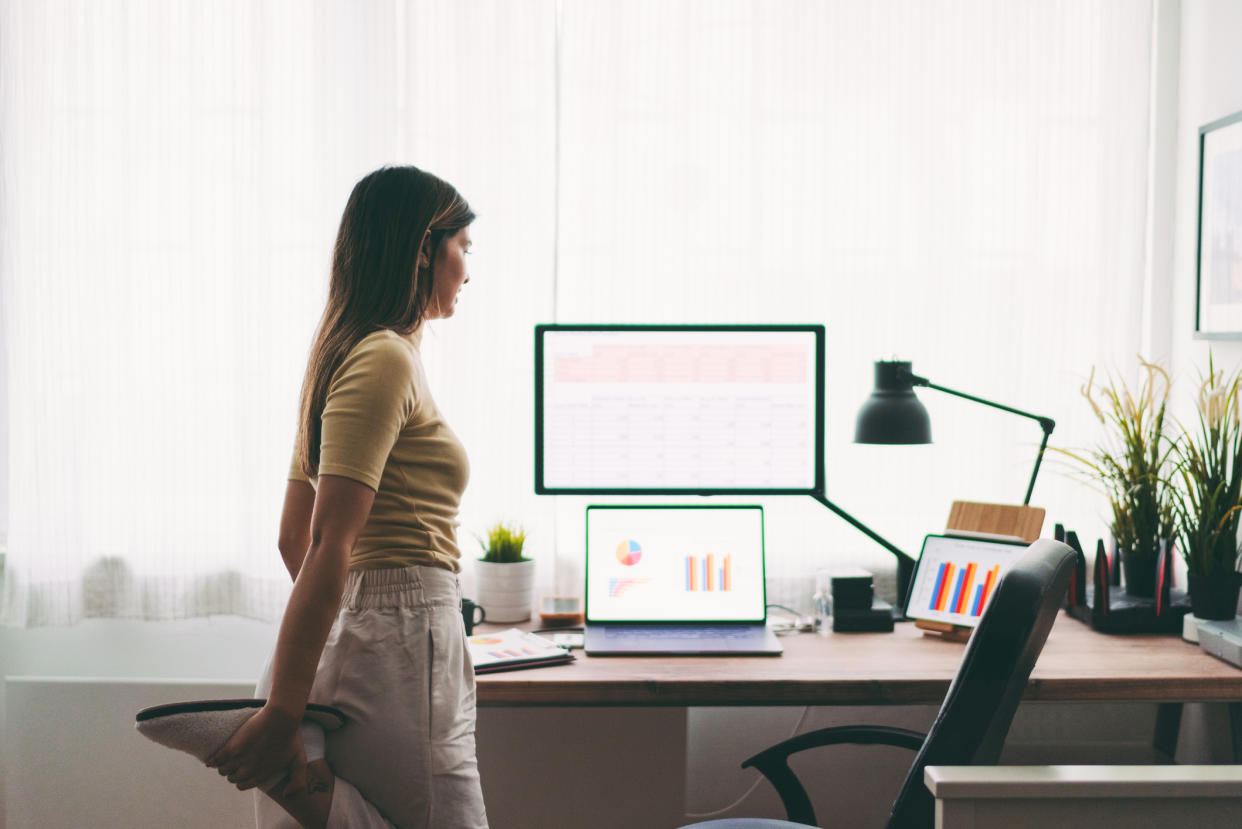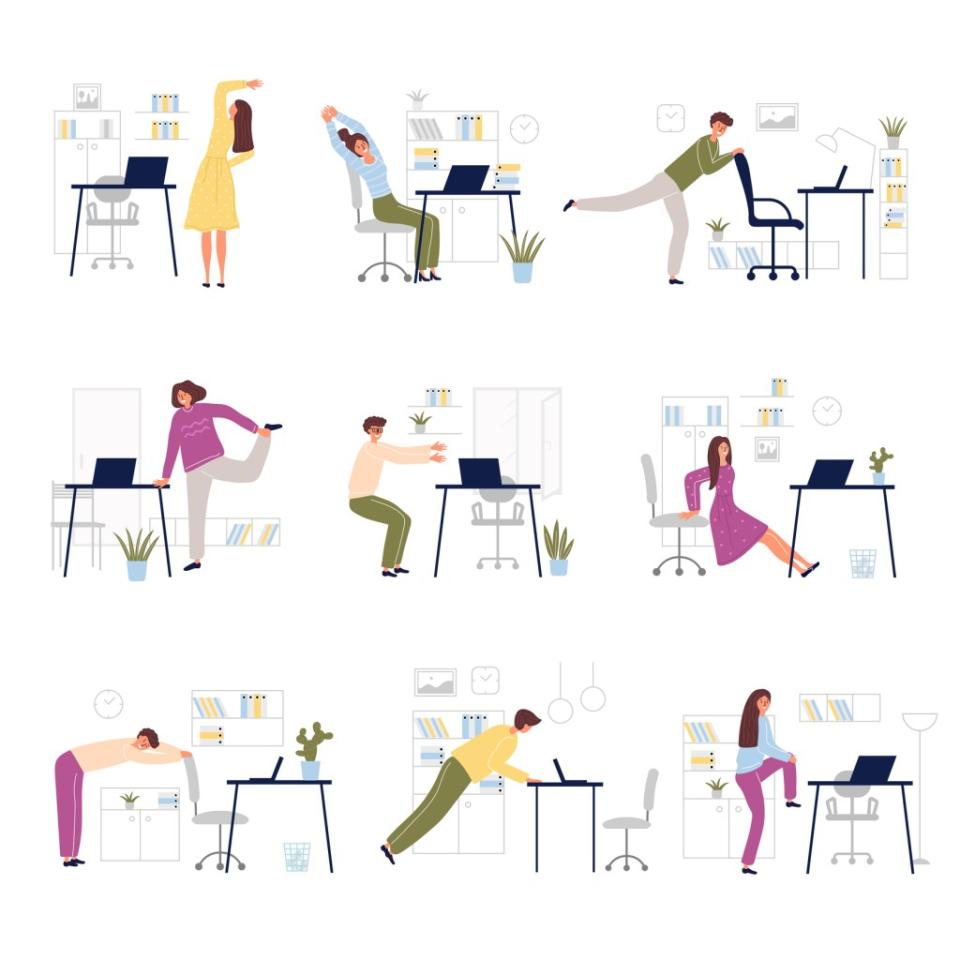Even mini-movements can offset the health risks of sitting at your job all day — here’s how

Let’s admit it: We all sit a little too much.
Whether it’s working a desk job, lounging on the couch or rotting in bed, being sedentary has become all too commonplace considering its well-documented ill effects — potentially increasing the risk of diseases, such as dementia, and premature death, according to some studies.
“Also, if we’re sitting for longer periods of time, we’re not engaging in any kind of cardiovascular activity,” oncology physical therapist Scott Capozza, of Yale Cancer Center’s Smilow Cancer Hospital, told Vox. “So it’s not good for the heart, for the lungs, for our circulation.”
Americans have been found to spend nearly one-third of their day sedentary, and a new report published this month linked a sedentary lifestyle to a 16% increased risk of death from all causes. According to the study, those who mostly sit at their jobs need to exercise an additional 15 to 30 minutes every day to mitigate the risk.
Regular exercise has long been believed to offset hours upon hours of sitting — some research suggests as little as 22 minutes per day — although experts are divided on just how much and how often.

“The muscles, it’s great for them to be active and stimulated really heavily and really hard for 30 minutes or 60 minutes, whatever you do for your exercise,” Keith Diaz, associate professor of behavioral medicine at Columbia University Medical Center, told Vox.
“But eventually they stop doing their job again when you don’t use them.”
Instead, regular movement throughout the day could be the best way to break up a sitting spell, according to Diaz, who led a study linking short walking breaks throughout the day to a reduction in blood pressure and blood sugar spikes.
But his research also found that people often forgot to stand; he advised timing walks to water breaks or using the end of a meeting or completion of a task as a cue to move.
“When you tie it into your routines,” he said, “that’s when it helps become more sustainable and becomes part of a habit you don’t have to rely on, like a reminder to do it.”

Diaz’s study concluded that just five minutes of low-intensity walking was most effective, but he has an unfounded “hunch” that just a minute of moderate to vigorous activity could be the best.
He added: “I would say if somebody only has a minute, go do something a little bit more intense.”
Among cubicles, that can prove difficult — you won’t be doing high knees or squats next to your co-workers — so Diaz suggests using the bathroom farthest away or parking at the back of the lot as ways to sneak in more steps. When working from home, taking a few minutes to unload the dishwasher can also add movement to your day, or, if you’re fancy, invest in a desk treadmill.
Even while sitting, you can still move, like tapping toes, flexing feet, rolling ankles, extending legs or even doing some upper body stretches.
“If you had to sit in class for two hours,” Diaz continued, “I’d go walk for 10 minutes afterward.”

Spending too much time on computers and phones with poor posture can result in dreaded tech neck, which can be remedied by putting your screen at eye level 18 to 24 inches away and sitting up straight, Capozza said.
“You don’t want to be too far back in your chair so that more of your weight is on your pelvis and your hips,” he explained. “But you don’t want to be too far forward in your chair so that more and more weight is on your feet.”
But this doesn’t mean you should never sit again; winding down at night in front of your favorite Netflix show won’t hurt you, so long as you moved throughout the day.
“Our bodies need rest and recovery from stressful days,” said Diaz, who loves to relax and watch TV at the end of a long day. “I don’t think there’s anything wrong with that. As long as I’ve made an effort throughout my day to be more active and take those movements, I don’t have to feel guilty at the end of the day.”

